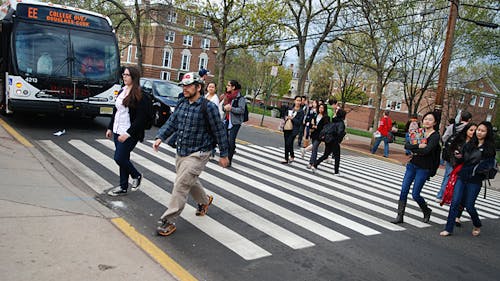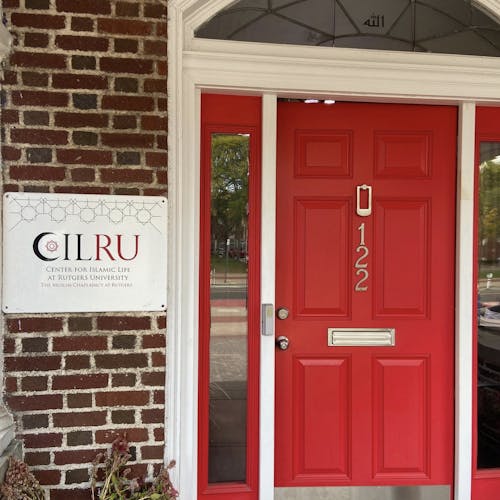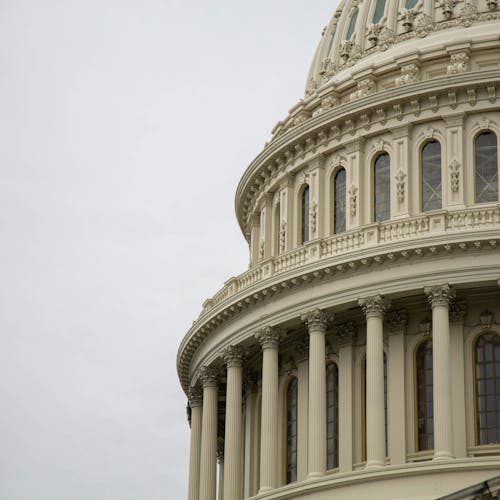Transportation Services urge crosswalk safety

Mike Kruimer was driving a roll-up truck down Hamilton Street Tuesday morning when a pedestrian cut between parked cars and crossed the street without checking traffic. Kruimer braked. The commercial truck he was driving came to a full halt without incident, and both driver and pedestrian continued on their ways.
“I know the laws, but what if I don’t see them?” Kruimer said, whose truck is unable to stop as quickly as small cars can. “A lot of times, I’m scared to death. People just don’t look.”
Kruimer, a board member of the N.J. Bike and Walk Coalition, an organization that focuses on making roads safer for bicyclists and pedestrians, said the pedestrian was looking at his phone and never looked up when crossing the street.
Pedestrian safety is a problem because cars and pedestrians are unaware of the law, which is generally not enforced, said Jack Molenaar, director of Transportation Services for the University.
According to Title 39 of the N.J. Division of Highway and Traffic Safety, motorists must come to a complete stop for pedestrians in a marked crosswalk and yield at unmarked crossings.
While the 2010 law classifies street corners and “T” intersections without painted lines or signage as unmarked crosswalks, it indicates that pedestrians not using crosswalks do not have the right of way and will be fined.
Crosswalk safety is more complicated at the University because campus streets are owned by separate government entities at different sections, making safety and maintenance an act of cooperation between agencies, Molenaar said.
People get wrapped up in drama and stress and they forget to have common sense, but drivers have to understand that the people in the way are not obstacles — they are people, too, said John Connelly, Rutgers University Student Assembly vice president.
A short-term police campaign to educate pedestrians and motorists about the law can cut down on misconduct, said Leigh Ann Von Hagen, a senior research specialist at the Voorhees Transportation Center.
Motor vehicles turning either right or left are a major cause of deadly vehicle-pedestrian accidents, Von Hagen said, who suggested installing “No Turn on Red” signs so pedestrians have time to cross the street safely.
But Molenaar said law enforcement is difficult because cities have more violent crime to worry about.
The University uses Transportation Services as an internal consultant on road safety and master planning to fit bicycle- and pedestrian-friendly streets into new construction designs that will work over the years, he said.
Engineers look at an intersection and think it is safe because no accidents have been reported, but planners think like the pedestrians, Molenaar said.
He said accidents at intersections tend to occur because of distracted drivers, but pedestrians do not help the cause.
Street painting and lighting at intersections is important to pedestrian safety but only a part of the solution, he said.
“Rutgers students tend not to use crosswalks,” he said, citing George Street by the River Dorms and College Avenue by Scott Hall. “It’s bad. It’s really bad.”
Kruimer said he sees examples of bad pedestrian habits every day, from people walking on the road with the flow of traffic to wearing dark clothing at night.
He said state laws have done more harm than good because they take away personal responsibility from pedestrians without educating them about their rights.
“Do-good legislation hurts people because people think legislation is going to keep them safe. It won’t. You’ll keep yourself safe,” Kruimer said.



